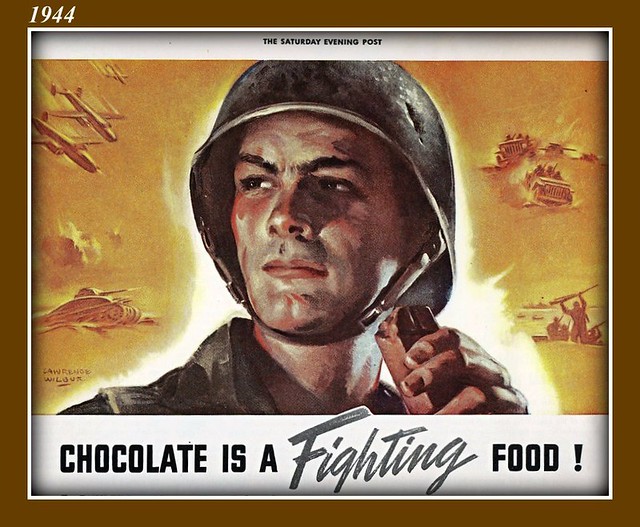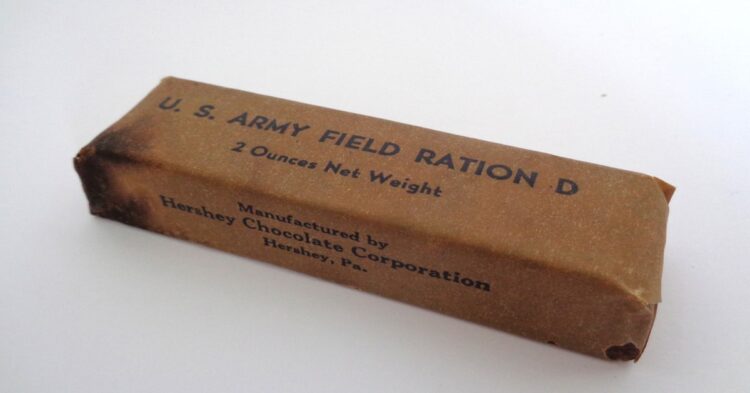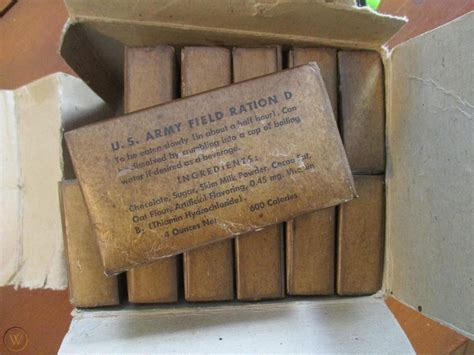In the midst of World War II’s global turmoil, soldiers faced unparalleled challenges, finding an unexpected ally in Hershey’s Chocolate. Renowned for indulgent treats, Hershey’s took on historical significance by supporting the U.S. military during this tumultuous period.
Anticipating the war’s impact, Milton Hershey, in 1937, initiated the development of the Field Ration D bar. This specially formulated chocolate bar aimed to boost troop morale by providing a taste of home. When the U.S. officially entered the war in 1941, Hershey’s stepped up its efforts, producing the dense and fortified Field Ration D bars, nicknamed the “D ration.”
Unlike typical Hershey’s chocolates, these bars were designed to withstand extreme temperatures and provide a quick energy boost for soldiers in various combat theaters. Hershey’s played a pivotal role in producing millions of these bars, demonstrating a commitment to supporting troops on the front lines and becoming a staple in American soldiers’ rations.
The partnership between Hershey’s and the U.S. military during World War II exemplifies how American businesses contributed to the war effort beyond traditional means. Hershey’s showcased corporate social responsibility and adaptability to the needs of the time.
Though not the luxurious chocolates associated with Hershey’s today, the Field Ration D bars played a vital role in sustaining and uplifting the spirits of countless soldiers during this challenging period. Hershey’s Chocolate transformed into more than a beloved treat; it became a symbol of support, comfort, and a sweet reminder of home for those serving their country on the front lines.
Hershey Chocolate Corporation’s involvement in military ration bars began with a crucial meeting in April 1937. Captain Paul Logan initiated discussions with Hershey’s leadership, marking the start of an experimental journey to create ration bars tailored to soldiers’ needs in the global conflict.
Milton Hershey’s keen interest led to immediate action, and Chief Chemist Sam Hinkle crafted a unique blend for the “Logan bars,” later known as Field Ration D. These bars were designed to withstand high temperatures and provide essential energy, meeting the diverse needs of soldiers in different climates.
As war became imminent, Hershey’s adapted to the changing landscape. After Pearl Harbor’s attack in 1941, the corporation met new specifications, meticulously packaging each bar to protect against poison gas. By the war’s end in 1945, Hershey’s production lines were churning out approximately 24 million ration units per week.
Hershey Chocolate Corporation’s extraordinary wartime efforts earned recognition with the Army-Navy ‘E’ Production Award in August 1942. The company received a total of five awards, highlighting its employees’ pride in supporting soldiers on the front lines.
Hershey’s extended its support beyond ration bars, contributing to various military needs, including the Emergency Accessory Packet and the Field Ration K. The introduction of the Hershey’s Tropical Chocolate Bar, responding to the Army’s request for a heat-resistant confectionery bar, further solidified Hershey Chocolate’s wartime legacy.
Hershey’s commitment to supporting the military during World War II remains a sweet chapter in the brand’s rich history, showcasing the corporation’s dedication to serving the needs of the nation during a critical period.
*The views and opinions expressed on this website are solely those of the original authors and contributors. These views and opinions do not necessarily represent those of Spotter Up Magazine, the administrative staff, and/or any/all contributors to this site.



